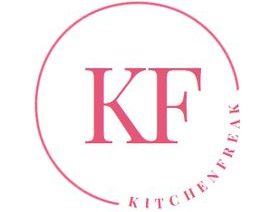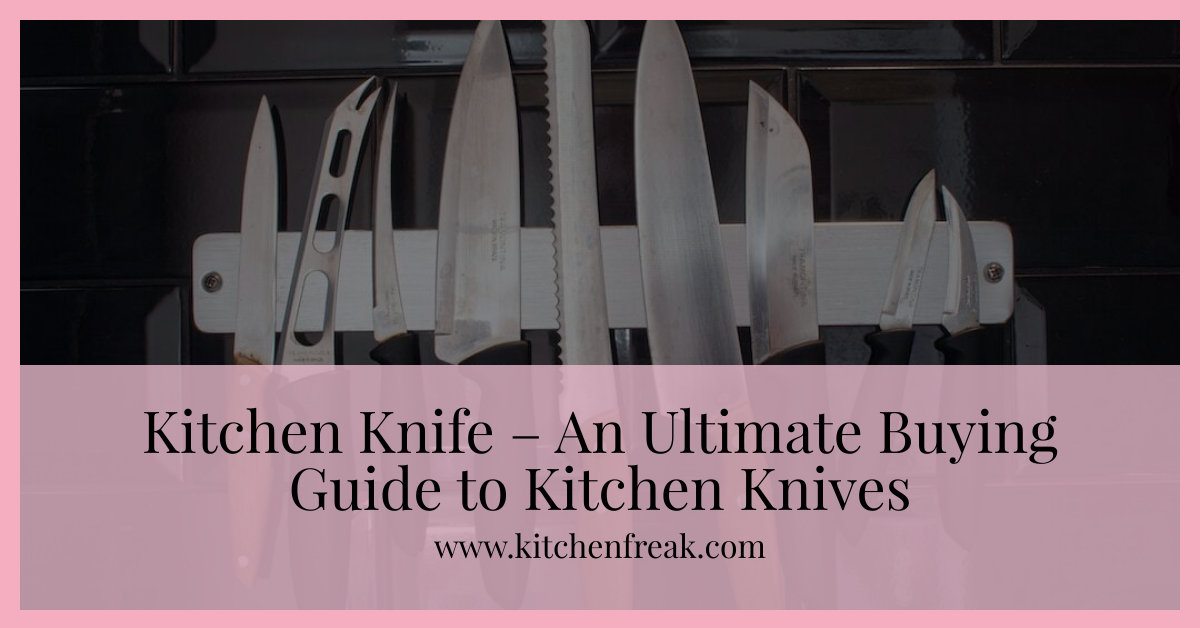Table of Contents
What is a kitchen knife?
A kitchen knife is usually used to cut vegetables, fruit and meat when cooking and then prepare the ingredients. Sounds simple, but there are big differences in quality that are crucial for a sharp, reliable kitchen knife. For example, there are inexpensive stamped blades, but also hand-forged examples. The production of high-quality chef’s knives has a long tradition, especially in Japan. For this reason and because of their extreme sharpness and good quality, Japanese kitchen knives are particularly popular.
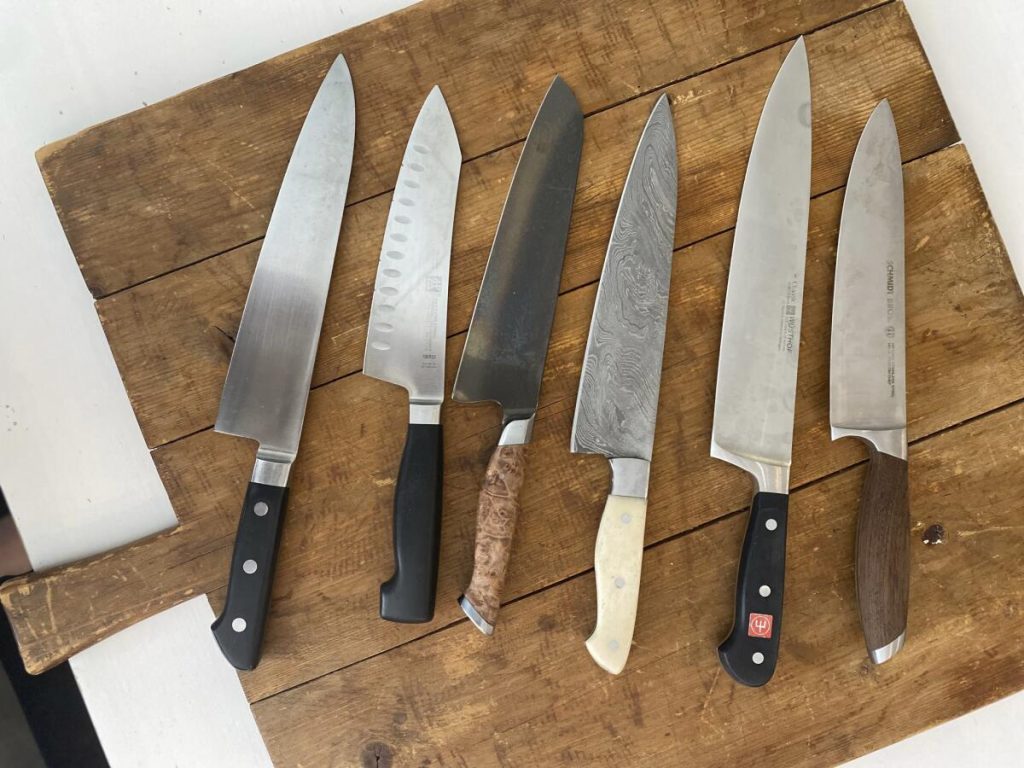
Different types of kitchen knives
There are a lot of different knives that differ mainly in what they are used for and how they are used. Here we briefly introduce you to the most common types:
Chef knife
Suitable for cutting meat, fish and vegetables as well as weighing and chopping herbs.
Santoku knife
Is the Japanese version of the chef’s knife. You can find out more about the differences in the next section.
Universal knife
Is a real all-round talent and has a medium-length blade, which is usually equipped with a serrated edge.
Vegetable knife
Is particularly suitable for cutting fruit and vegetables. Due to the relatively short blade, it can also be used for delicate work such as peeling and coring fruit and vegetables.
Paring knife
Has a slightly curved, short blade that allows precise separation of the peel, even with thin peel or small pieces of food.
Meat knife
Suitable for various types of meat, but also fish. The blade is similar to that of the chef’s knife, but is slightly narrower.
Bread knife
Has a serrated edge – similar to a saw – which enables precise cutting of even slices of bread, even on hard crusts.
Cheese knife
Suitable for cutting various types of cheese. To prevent the cheese from sticking to the knife, the blades usually have recesses of different sizes.
Boning Knife
A boning knife features a thin, flexible blade, ideal for separating meat from bones and making precise cuts in poultry, fish, and meat.
Utility Knife
A utility knife is a versatile, medium-sized tool perfect for everyday kitchen tasks like slicing fruits, vegetables, and small pieces of meat.
Carving Knife
Carving knives have long, narrow blades, designed for slicing thin cuts of meat from larger pieces such as roasts, turkeys, and hams.
Fillet Knife
Fillet knives are characterized by their thin, flexible blades, ideal for removing bones and skin from fish with precision.
Steak Knife
A steak knife is a table knife with a sharp serrated edge, used for cutting steak and other cooked meats with ease.
Cleaver Knife
A cleaver knife, with its broad, heavy blade, is used for chopping through bone and tough materials, as well as for crushing ingredients like garlic.
Japanese Knife
Japanese knives, known for their sharpness and precision, include various types such as Santoku and Nakiri, each designed for specific tasks in the kitchen.
Kitchen Shears
Kitchen shears are multi-functional scissors used for a variety of tasks, from snipping herbs to cutting through poultry joints and packaging.
Chef’s knife vs. Santoku
Chef’s knife or Santoku – which is better? As already mentioned, the Santoku knife originally comes from Asian cuisine and is the Japanese version of a chef’s knife. The two kitchen knives differ primarily in the shape of their blade. While the blade of a chef’s knife ends in a sharp point, the blade of a santoku is almost the same width along its entire length. Thanks to its rounded shape, the chef’s knife, in contrast to the Santoku, can also be used as a chopping knife and is therefore particularly suitable for chopping herbs.
The Santoku, in turn, has slight grooves on the blade, which form small air cushions between the blade and the cuttings and thus ensure that the cuttings are separated more easily from the blade. Since you can perform similar tasks with both knives, none is better than the other. You just use different cutting techniques for the knives, although which one you prefer is a matter of taste.
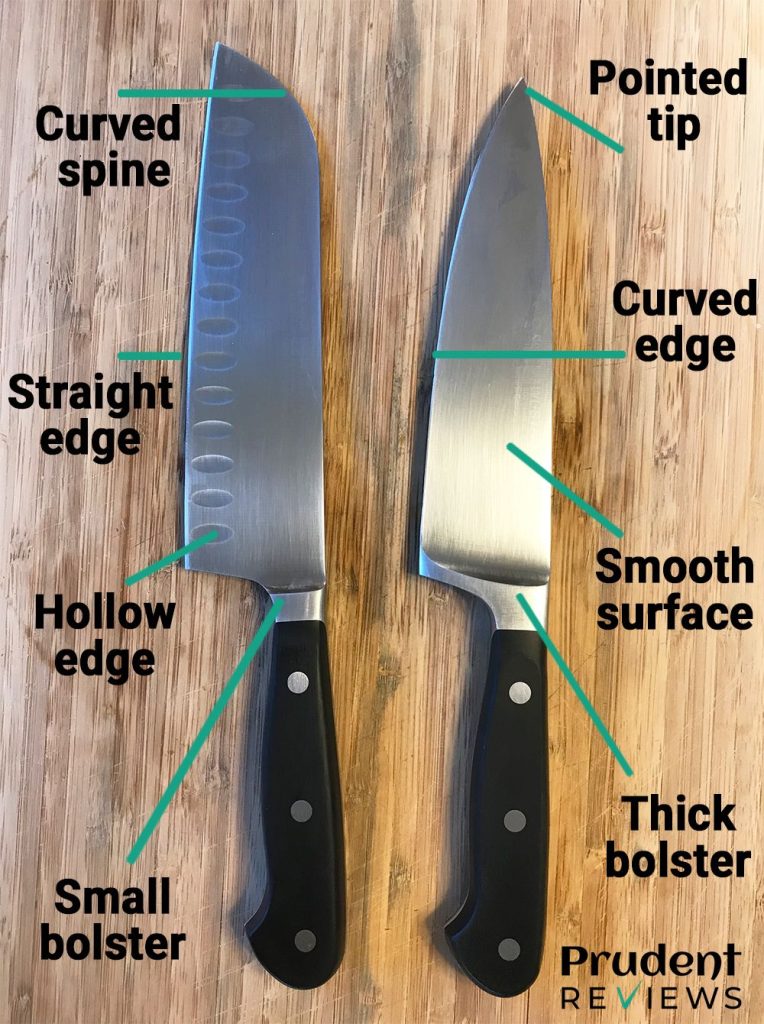
Differences in quality between kitchen knives
The quality of a knife depends primarily on the steel and the quality of the ship. The edge retention and rust resistance of a knife blade are primarily influenced by the chemical composition of the steel. The more carbon the steel contains, the longer the knife stays sharp – this is referred to as high edge retention.
A carbon steel blade can also be sharpened more flexibly. The following also applies: the thinner and sharper the blade of the kitchen knife is, the better its edge retention. The disadvantage of carbon steel: It is not rust-resistant and requires more care. The chemical element chromium is primarily responsible for the rust resistance of the blade. So if you don’t want to have too much trouble caring for your kitchen knives, you can choose a blade made of something softer.
Why shouldn’t kitchen knives go in the dishwasher?
Even if it is the more convenient way – you should not put sharp knives in the dishwasher for two reasons. The metal of your sharp knives is attacked by substances such as alkalis, salts and acids, which ensure that the cutlery gets clean in the dishwasher.
Although high-quality kitchen knives are made of a special, hard blade steel, they do not tolerate aggressive cleaning agents well. A chemical reaction causes small brown spots to appear on the knife. These small rust holes can become larger over time and cause the knife to become dull and therefore cut more poorly. We therefore recommend washing your kitchen knife by hand with lukewarm water, as it will rust and become dull in the dishwasher.
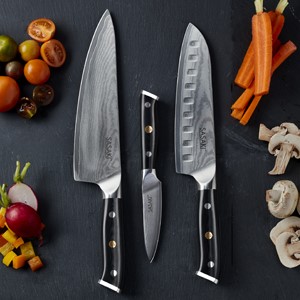
How do I sharpen my kitchen knives correctly?
Since kitchen knives inevitably become dull over time through regular use, we have a few tips for sharpening knives here. There are various tools you can use to get your kitchen knives with smooth blades (e.g. not bread knives) sharp again:
- Sharpening steel : The sharpening steel is a long rod that can be coated with different hard materials. When using it, it is important to note that your sharpening steel should always be harder than the knife you are sharpening. To achieve the desired result, the grinding angle should be about 15-20 degrees.
- Grinding stone : The grinding stone or whetstone is a usually elongated, hand-sized stone for sharpening cutting tools. Here too, the knife is drawn over the stone at an angle of approx. 15 degrees. Moisten the stone with water before use. This reduces friction and sharpening is a little gentler on the knife.
- Knife sharpener : There are now also manual and electric knife sharpeners that require a little less experience. When using it, it is important that you do not move your knife back and forth, but only sharpen in one direction.
Recommended: The Best Way to Store Kitchen Knives: Top Knife Storage Solutions
Kitchen Knife Set Guide – FAQs
Q: What are the different types of kitchen knives available?
A: There are various types of kitchen knives available, such as chef’s knife, paring knife, utility knife, santoku knife, bread knife, boning knife, and slicing knife.
Q: How do I maintain the sharpness of my kitchen knives?
A: To maintain the sharpness of your kitchen knives, you can regularly hone them using a honing steel or sharpen them using a knife sharpener. Proper storage and handling also contribute to keeping the knives sharp.
Q: What is the difference between forged and stamped knives?
A: Forged knives are crafted from a single piece of steel, making them stronger and heavier, whereas stamped knives are cut from a large sheet of steel and are lighter and more affordable.
Q: What features should I consider when buying a new kitchen knife?
A: When buying a new kitchen knife, consider the type of steel used, the blade edge, handle material, knife balance, and your specific cooking needs and preferences.
Q: What is the best material for kitchen knives?
A: Stainless steel is a popular choice for kitchen knives due to its durability, resistance to corrosion, and ease of maintenance.
Q: Why are 8-inch chef’s knives recommended for most home cooks?
A: An 8-inch chef’s knife is the best all-rounder and is versatile enough to handle various cutting tasks in the kitchen, making it a popular choice for most home cooks.
Q: How do I choose the best chef’s knife for my kitchen?
A: Consider factors such as the weight, handle comfort, blade material, and your cutting style when choosing the best chef’s knife for your kitchen.
Q: What are the benefits of using Japanese steel knives?
A: Japanese steel knives are known for their sharpness, precision, and agility, making them a favorite among professional chefs and home cooking enthusiasts.
Q: What is the purpose of a knife block in the kitchen?
A: A knife block provides a safe and organized storage solution for your kitchen knives, helping to protect the blades and keep them easily accessible during meal preparation.
Q: Are there specific knives recommended for chopping and slicing?
A: Yes, knives with a sharp blade, such as the gyuto knife or European-style knives, are recommended for chopping and slicing tasks in the kitchen.
